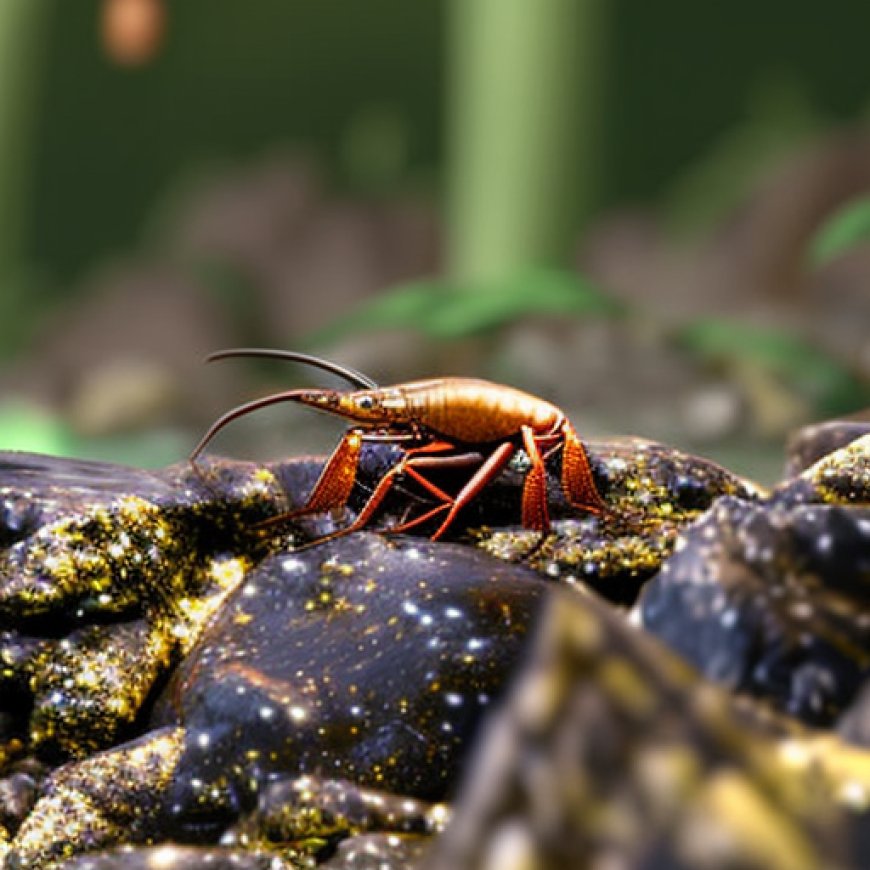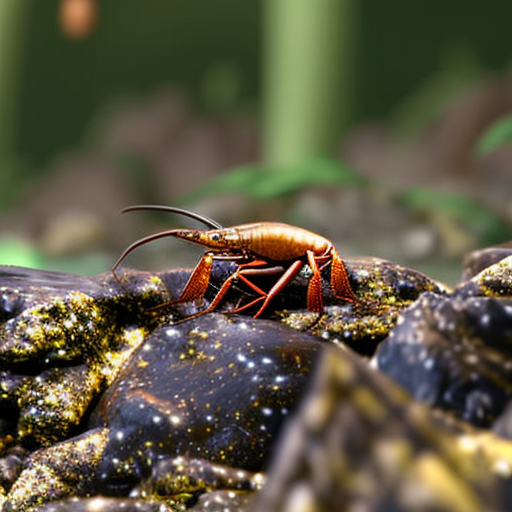This pesky crayfish showed up in Colorado, and wildlife managers are on high alert
This pesky crayfish showed up in Colorado, and wildlife managers ... Wyoming Public Media


Colorado Parks and Wildlife Discovers Invasive Crayfish Species in Lake Granby
Colorado Parks and Wildlife (CPW) recently announced the discovery of an invasive crayfish species in Lake Granby. The rusty crayfish, named for reddish spots on its shell, hasn’t been seen in the state in over a decade. CPW is on high alert due to Lake Granby’s proximity to the Colorado River and is now focused on preventing the further spread of the crayfish.
Threat to Native Species and Ecosystem
The rusty crayfish is known for its aggressive nature, which allows it to outcompete native species for resources. Additionally, it is not a suitable prey species for sportfish. The invaders disrupt the aquatic food web by consuming small fish, insects, and fish eggs. They also pose a threat to native wildlife by feeding on plants that serve as critical habitat for fish spawning and as a food source.
Possible Introduction and Legal Measures
CPW believes that an irresponsible angler may have brought the rusty crayfish to Lake Granby using it as live bait. It is important to note that crayfish are not legal as bait in Colorado. Furthermore, crayfish of any species are not native west of the continental divide. CPW emphasizes that all crayfish caught west of the divide must be immediately killed or returned to the water from which they were taken.
Concerns and Previous Sightings
The recent sighting of rusty crayfish in Lake Granby is particularly concerning due to its connection to the Colorado River. Once established, it is difficult to eradicate the species. Previous sightings of rusty crayfish in Colorado include the Yampa River, Catamount Reservoir, Sanchez State Wildlife Area, and Stagecoach Reservoir State Park.
Import and Possession Bans
CPW has been actively addressing the issue of crayfish. In August, the agency held a meeting to consider bans on the import and possession of live red swamp crayfish, which are popular for human consumption. Although thousands of pounds of the crayfish are illegally imported into the state each week, none have been found in the wild.
Regional Impact and Ecosystem Engineering
Rusty crayfish sightings are relatively rare in the arid West. Wyoming wildlife officials are also on high alert after discovering nine rusty crayfish since 2003. The spread of rusty crayfish has been more prevalent in the Midwest, where scientists have studied their impact as an invasive species. Rochelle Sturtevant, a program manager, describes rusty crayfish as an “ecosystem engineer” that can cause structural changes and disrupt plant communities.
Importance of Preventing Spread
It is crucial to prevent the spread of rusty crayfish to protect native species and maintain ecosystem balance. Native crayfish in the Great Lakes region struggle to compete with rusty crayfish. Stopping the spread of this invasive species is a priority for wildlife managers.
Sustainable Development Goals (SDGs)
- Goal 14: Life Below Water – Protect and restore marine ecosystems and sustainably manage marine resources.
- Goal 15: Life on Land – Protect, restore, and promote sustainable use of terrestrial ecosystems, sustainably manage forests, combat desertification, and halt biodiversity loss.
This story is part of ongoing coverage of water in the West, produced by KUNC in Colorado and supported by the Walton Family Foundation. KUNC is solely responsible for its editorial coverage.
Copyright 2023 KUNC. To see more, visit KUNC.
SDGs, Targets, and Indicators
1. Which SDGs are addressed or connected to the issues highlighted in the article?
- SDG 14: Life Below Water – The article discusses the invasive crayfish species and its impact on the aquatic food web, fish spawning, and native wildlife.
- SDG 15: Life on Land – The article mentions the outcompeting of native species by the invasive crayfish and the changes it brings to the plant community.
2. What specific targets under those SDGs can be identified based on the article’s content?
- SDG 14.4: By 2020, effectively regulate harvesting and end overfishing, illegal, unreported, and unregulated (IUU) fishing, and destructive fishing practices and implement science-based management plans, in order to restore fish stocks in the shortest time feasible.
- SDG 15.5: Take urgent and significant action to reduce the degradation of natural habitats, halt the loss of biodiversity, and protect and prevent the extinction of threatened species.
3. Are there any indicators mentioned or implied in the article that can be used to measure progress towards the identified targets?
- Indicator for SDG 14.4: Proportion of fish stocks within biologically sustainable levels.
- Indicator for SDG 15.5: Number of invasive alien species and their impacts on threatened species.
4. Table: SDGs, Targets, and Indicators
| SDGs | Targets | Indicators |
|---|---|---|
| SDG 14: Life Below Water | Target 14.4: By 2020, effectively regulate harvesting and end overfishing, illegal, unreported, and unregulated (IUU) fishing, and destructive fishing practices and implement science-based management plans, in order to restore fish stocks in the shortest time feasible. | Indicator: Proportion of fish stocks within biologically sustainable levels. |
| SDG 15: Life on Land | Target 15.5: Take urgent and significant action to reduce the degradation of natural habitats, halt the loss of biodiversity, and protect and prevent the extinction of threatened species. | Indicator: Number of invasive alien species and their impacts on threatened species. |
Behold! This splendid article springs forth from the wellspring of knowledge, shaped by a wondrous proprietary AI technology that delved into a vast ocean of data, illuminating the path towards the Sustainable Development Goals. Remember that all rights are reserved by SDG Investors LLC, empowering us to champion progress together.
Source: wyomingpublicmedia.org

Join us, as fellow seekers of change, on a transformative journey at https://sdgtalks.ai/welcome, where you can become a member and actively contribute to shaping a brighter future.







